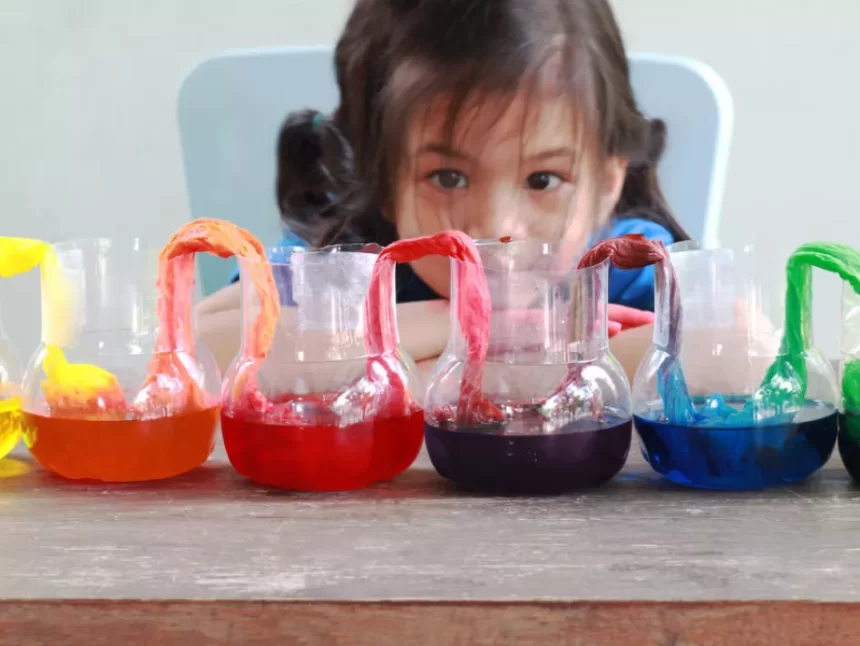Creativity in the classroom is often overlooked in a modern classroom environment where standardised testing, a strict curriculum, and ever advancing technologies rule the education sector.
Students are nowadays constantly fed a stream of messages telling them how to think, act, dress and speak. These messages are received by students both inside and outside the classroom. The bombardment can leave them feeling they have no outlet for individual creative expression.
Read more: New book shares stories of inspirational educators
And with many teachers finding their once inherently creative profession has become subject to limiting regulations and restrictions that guide every lesson plan, it’s more important than ever that students retain their creative spirit and remember what it means to be human.
The value of creativity in education
But what actually is creativity? While boiling it down to a singular definition is difficult, many experts think of creativity as a set of skills that allow you to solve problems, communicate with others, and entertain ourselves and others.
Creativity isn’t just for storytellers and artists. It’s an attitude towards problem-solving that translates across several industries — from chemistry to biology, to business.
Given its abstract nature, Australian education has almost forgotten creativity, with knowledge becoming the sole focus of most schools for decades. Yet, creativity fuels our drive to innovate, our need to problem-solve, and our critical thinking ability. Creativity encourages students to explore their ideas, take new risks, and think outside the box.
In an increasingly complex and interconnected world, these skills are becoming more essential. By nurturing creativity in the classroom, we empower our students to become adaptable, resilient, and capable individuals — ready to face the world’s challenges outside of the classroom and search high and low for the answers to their burning questions.
Challenges in current education system
The current Australian education system, with its heavy focus on standardised tests and memorisation, often unintentionally stifles creativity. Students are compelled to conform to a rigid curriculum, often leaving little room for imagination and self-expression.
This approach not only undermines students’ individuality but also hampers the development of crucial skills, including collaboration and communication.
According to a 2015 NASA study, the Western schooling system has been proven to actually stifle creativity.
After finding that 98 per cent of five-year olds scored in the top percentile for imagination, scientists found this percentage continued to drop as the children shuffled through their schooling life.
After re-emerging as secondary school graduates, this 98 per cent had dropped to a measly two per cent of children still in that top percentile.
Reintroducing creativity
To truly put creativity back into the classroom and reignite students’ passion for out-of-the-box thinking, we must rethink how we approach education at all levels.
Encourage arts and cultural education
Arts education is often overlooked and underfunded. But it provides a fertile ground for nurturing creativity. By integrating arts, music, drama, and dance into the curriculum, students can naturally develop communication skills and organically discover self-expression.
Embrace project-based learning
Project-based learning fosters creativity by providing students with real-world challenges and the freedom to explore different solutions. By working collaboratively on projects, students develop critical thinking, problem-solving, and creativity in a way that’s hands-on and relevant.
Foster a growth mindset
It’s important that teachers show students that hard work and perseverance will overcome talent every single time. By promoting a growth mindset in your classroom, you can show your students that intelligence and skills can be developed over time — if they properly apply themselves to the material.
Encourage students to take risks, embrace failure as a learning opportunity, and persist in the face of adversity. These are all vital components of a creative mindset.
Support teacher professional development
Teachers play a pivotal role in cultivating creativity in the classroom. By completing ongoing professional development opportunities, you can ensure you have the latest skills, knowledge, and resources to inspire creativity in your students. Remember to collaborate amongst educators and share your best practices with other like-minded teachers. Strategic networking is always powerful.
Incorporate technology as a tool
Technology can be a powerful catalyst for creativity. Incorporating digital tools and resources in the classroom can enable students to explore new avenues of creativity, such as coding, multimedia production, and virtual reality experiences. And by ensuring students still have time to simply smell the flowers — literally — teachers can help find the ideal balance between classroom-based, technology-led creativity and the creative appreciation of the world beyond the interactive whiteboard.








